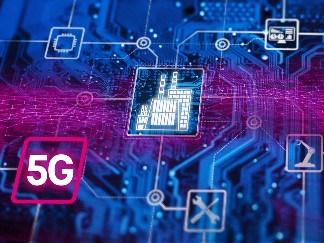
Machine Learning (ML) is transforming Internet of Things (IoT) mobility by enhancing how data from connected devices is processed,
analyzed, and utilized to optimize transportation and mobility solutions. Here are some key aspects of how ML is applied in IoT mobility:








1. Predictive Maintenance
Use Case: Sensors on vehicles collect data related to performance (e.g., engine temperature, brake wear). ML models predict when parts are likely to fail, enabling proactive maintenance.
Benefit: Reduces downtime and maintenance costs by addressing issues before they cause breakdowns.
2. Smart Traffic Management
Use Case: Real-time data from traffic cameras, sensors, and GPS devices is analyzed using ML to optimize traffic light timing and manage congestion.
Benefit: Improves traffic flow, reduces commute times, and minimizes emissions by preventing traffic jams.
3. Autonomous Vehicles
Use Case: Self-driving cars use ML to process data from cameras, LIDAR, radar, and other sensors to make decisions about steering, braking, and acceleration.
Benefit: Enhances safety and efficiency by enabling vehicles to navigate complex environments without human intervention.
4. Fleet Management
Use Case: ML algorithms analyze data from connected vehicles to optimize routing, fuel consumption, and driver behavior.
Benefit: Improves operational efficiency and reduces costs for transportation and logistics companies.
5. Demand Prediction
Use Case: Ride-sharing and delivery services use ML to predict demand based on historical data, weather, events, and time of day.
Benefit: Helps in resource allocation, such as positioning vehicles where demand is expected to be highest, thus reducing wait times for customers.
6. Personalized Mobility Solutions
Use Case: ML analyzes user preferences, habits, and past behavior to provide personalized mobility solutions, such as tailored route recommendations or vehicle settings.
Benefit: Enhances user experience by providing more convenient and efficient travel options.
7. Anomaly Detection
Use Case: ML models are trained to detect unusual patterns in sensor data from vehicles, which could indicate a security threat or system malfunction.
Benefit: Enhances safety and security by identifying and responding to potential issues in real-time.
8. Energy Management
Use Case: In electric vehicles (EVs), ML optimizes energy consumption by managing battery usage, predicting optimal charging times, and integrating with smart grids.
Benefit: Extends battery life and reduces energy costs by optimizing how and when energy is used.
9. Mobility-as-a-Service (MaaS)
Use Case: ML supports MaaS platforms by integrating data from various modes of transportation (buses, trains, bikes, etc.) to provide seamless journey planning and payment options.
Benefit: Simplifies travel by offering a unified platform for planning and paying for trips across multiple transportation services.
10. Environmental Monitoring
Use Case: ML models analyze data from environmental sensors to monitor air quality, noise levels, and other factors that affect urban mobility.
Benefit: Supports the development of cleaner, healthier cities by informing policies and actions to reduce pollution.
Challenges and Considerations
Data Privacy: With vast amounts of data being collected, ensuring user privacy and data security is crucial.
Scalability: ML models need to be scalable to handle the massive data streams from IoT devices in real-time.
Integration: Seamless integration of ML with existing IoT systems and infrastructure is essential for effective implementation.
By leveraging ML in IoT mobility, cities can become smarter, transportation systems can be more efficient, and users can enjoy safer and more personalized mobility experiences.

Leave a Reply